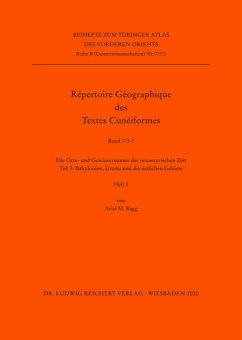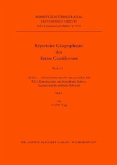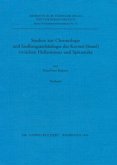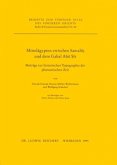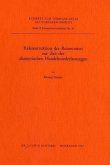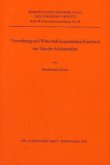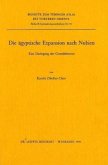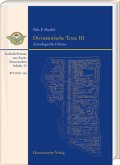Historical geography is one of the most important disciplines which allow a reconstruction of the history of the Ancient Near East. There are principally the cuneiform sources which open the access to the numerously attested geographical names. The toponyms from these sources were collected and commented in the series Répertoire Géographique des Textes Cunéiformes (RGTC) published in the frame of the Tübinger Atlas des Vorderen Orients (TAVO). Sixteen volumes already published in this series have become together with the corresponding TAVO-historical maps an important research tool in the field of the historical geography of the Ancient Near East.The present volumes are the third and last part of the Neo-Assyrian toponyms for the series Répertoire Géographique des Textes Cunéiformes (RGTC 7). The first part was published by the author in 2007 and dealt with the Levant (RGTC 7/1). The Second part RGTC 7/2 (2017) covers Egypt, the Arabian peninsula, the Assyrian heartland, the Transtigridean region, the Northern Jezireh, the Habur-Basin, the Eastern Jezireh, and Northern Mesopotamia. RGTC 7/3 comprises approx. 1400 toponyms and further 500 fragmentary place names from the Eastern regions of the Assyrian empire, Urar_u, and Babylonia. Furthermore, places of unknown location were also included. As in the first two volumes, RGTC 7/3 has detailed registers as well as two appendices with additions and corrections to RGTC 7/1 and RGTC 7/2.
The arrangement of the book follows the earlier volumes of the series. RGTC 7 comprises all the published, non-literary sources from the Neo-Assyrian period, namely royal inscriptions, letters, legal and administrative texts, treaties, royal grant and decrees, astrological reports, and historiographical texts. Following Kh. Nashef's RGTC 5 (1982), all the texts after 934 BCE have been considered. The alphabetically arranged collection of place names is divided as usual in the categories "place names" and "watercourses". The main criterion for the arrangement of the attestations are the different spellings. Within the same spelling the arrangement of the attestations follows chronological and typological criteria. The attestations are followed by a commentary concerning the identification of the place name with a discussion of the relevant secondary literature. As in the volumes RGTC 8 and RGTC 12/2, the toponyms are ordered according to their linguistic provenance. Comprehensive indices, among them a register of modern place names as well as a register of the mentioned Old-Aramaic, Biblical, and Classical toponyms among others complete the books. Enclosed maps show most of the identified places.
Hinweis: Dieser Artikel kann nur an eine deutsche Lieferadresse ausgeliefert werden.
The arrangement of the book follows the earlier volumes of the series. RGTC 7 comprises all the published, non-literary sources from the Neo-Assyrian period, namely royal inscriptions, letters, legal and administrative texts, treaties, royal grant and decrees, astrological reports, and historiographical texts. Following Kh. Nashef's RGTC 5 (1982), all the texts after 934 BCE have been considered. The alphabetically arranged collection of place names is divided as usual in the categories "place names" and "watercourses". The main criterion for the arrangement of the attestations are the different spellings. Within the same spelling the arrangement of the attestations follows chronological and typological criteria. The attestations are followed by a commentary concerning the identification of the place name with a discussion of the relevant secondary literature. As in the volumes RGTC 8 and RGTC 12/2, the toponyms are ordered according to their linguistic provenance. Comprehensive indices, among them a register of modern place names as well as a register of the mentioned Old-Aramaic, Biblical, and Classical toponyms among others complete the books. Enclosed maps show most of the identified places.
Hinweis: Dieser Artikel kann nur an eine deutsche Lieferadresse ausgeliefert werden.
"Die beiden hier anzuzeigenden, trotz jeweils mehreren Zentimetern Dicke fast liebevoll und untertreibend »Hefte« genannten Bände beschließen gleich in zweifacher Weise ein umfassendes Werk. Einerseits beenden sie nach rund 20-jähriger Arbeit die mühevolle, nun 5 voluminöse Bände umfassende Publikation der geographischen Namen der neuassyrischen Zeit, die allesamt von A.M. Bagg verfasst wurden. 2007 erschienen die Ortslagen der Levante (vgl. ZAW 120 [2008], 444), 2017 in zwei Bänden diejenigen Ägyptens, der arabischen Halbinsel, der _azira, Nordmesopotamiens, des Gebiets am mittleren Eufrat, Zentralassyriens und des Osttigrisgebiets (vgl. ZAW 130 [2018], 298 f.). Die beiden letzten Bände bieten nun die Ortslagen Babyloniens, Urartus und der östlich davon gelegenen Gebiete. Gerade für die alttestamentliche Forschung und die Beschäftigung mit Umwelttexten des 1. Jt.s v. Chr. sind diese Bände besonders wichtig. Gleichzeitig wird damit nach fast 50 Jahren die Arbeit am Répertoire Géographique des Textes Cunéiformes (RGTC) abgeschlossen (...)"
Von W. Zwickel
In: Zeitschrift für die alttestamentliche Wissenschaf (ZAW) 2021, Heft 1, S. 98 f.
Von W. Zwickel
In: Zeitschrift für die alttestamentliche Wissenschaf (ZAW) 2021, Heft 1, S. 98 f.

